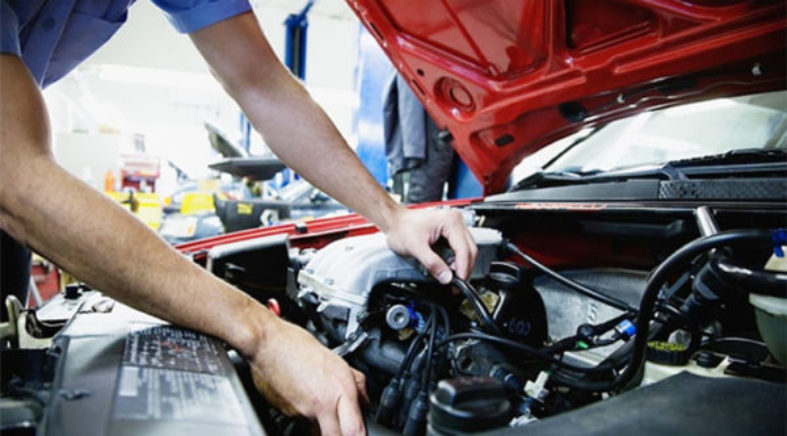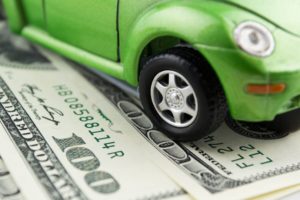“How much!?” you blurt out at the mechanic as they hand you your car repair bill.
You feel beads of sweat forming on your forehead. You weren’t prepared for this.
Inevitably, your car is going to need to undergo maintenance and repairs, and this often isn’t cheap.
To make sure you’re prepared for some of the most common (and expensive!) car repairs, read on!
1. Brakes
This is a dangerous one! If you hear a nasty grinding or high-pitched squealing sound when you press down on your breaks, then it’s time to get them checked out.
Your brakes may fall into disrepair for a number of reasons. Your brake pads might have worn away, causing metal plates to grind against each other. Or it might have overheated from overuse!
Replacing your brakes will set you back $250 on average, but if you have a swankier model, it can skyrocket into the thousands.
2. Fuel Filter
Common signs of a failing fuel filter include abnormal fuel reserve depletion or difficulty starting your engine.
The fuel filter is a very common repair, but doesn’t cost too much each time.
It’ll cost around $90 to replace it, but the catch is, you may need to do this a staggering 25 times!
3. Fuel Injectors
These syringe-like mechanisms shoot the correct amount of fuel into the internal combustion engine. You know they’re falling apart, leaking fuel, when your car starts puffing out black smoke.
When you go to your mechanic to fix one broken injector, do not be alarmed when he tells you he’s going to have to change the lot of them, even if they’re not faulty.
Time to cough up a heartbreaking $1,000-1,500.
This breakdown is totally inevitable though you can try and reduce the frequency by making a few small changes. Keep your gas tank filled up to prevent water getting in, replace the aforementioned fuel filter when it needs done, and don’t skimp on the quality of the fuel you’re using!
4. Turbo
Your turbo pushes compressed air into the combustion chamber, improving the efficiency of the engine’s internal combustion system.
You’ll know it’s breaking down when you experience a loss of power. The turbo will not be able to adapt to engine pressure alterations.
To keep your turbo in ship-shape condition, take it easy and allow your car engine to idle after you’ve revved your engine, and allow your car to slowly increase in speed when you first turn it on, rather than blasting it up to 88mph in 5 seconds flat.
It will set you back almost $800 to replace your turbo.
5. Cylinder Head Gasket
Your engine is at risk of serious damage if this gasket breaks down. Its function is to separate the combustion chambers from the oil and cooling systems.
Your car will tell you that something is up by lighting up your ‘Check Engine’ light. You will probably also have a high engine temperature reading and your engine will rattle.
Putting this right costs in the region of $900 to $1,300. Expect to do this around 5 times.
6. Catalytic Converter
Made up of expensive materials like palladium and gold, this transforms toxic gases like carbon monoxide into carbon dioxide and water.
The tell-tale sign of disrepair is poor fuel economy.
Expect to shell out $250 to $1000 for a replacement, all dependent on what car you have.
7. Timing Belt
To make sure the engine valves open and close in time, the timing belt synchronises mechanism rotation. Since it’s in constant use, it is very likely to deteriorate, and when it does so, your engine is in danger.
Note any screeching or grinding in the engine area as an indicator of damage.
Your mechanic may recommend you get it replaced before it has even broken, but go with their word because the further issues it’ll cause if it does break will end up costing you a lot more in the long run.
Just to replace the timing belt alone costs anywhere between $400 and $1,000.
8. Clutch
A broken clutch means changing gears will be laborious and power-transfer between the engine and wheels will basically be impossible.
You may have to replace it 10 times at $500-600 a pop.
You can preserve your clutch for longer if you keep your car in neutral and put the handbrake on when you’re not moving.
9. Flywheel
Your flywheel helps your engine start running and it works with your clutch to pass power between the engine and transmission. If you need to replace your clutch, you’ll probably need to get a new flywheel too.
A broken clutch may result in a broken flywheel, and only replacing one or the other means the newer item is in danger of early damage.
Take a breath because a new flywheel stacks up at $1,000.
10. Battery
And coming in at number 10 is your car battery!
Depending on your car, it can cost a measly $50 all the way up to $400. Like so many other repairs on this list, it’s not just a one-off. 13 times is the average amount of times you’ll need this repair done.
Tom Butcher is a freelance writer, covering a wide range of topics, including finance, business and motoring. At the moment, he is helping LeaseFetcher tell the world about car leasing.



